Italy has always been a land of passage, adventure and amazement for countless travelers from every corner of the world. A land that has welcomed everyone and continues to do so, from the heroic explorers of remote eras to the modern intellectuals of the Grand Tour, up to the stars of cinema and sports champions who today still choose Bel Paese as the perfect place for the holidays (and not only).
It is therefore not surprising that Italy represents, year after year, the dream trip of millions of international tourists eager to relive the glories and wonders of the past of our land. A true experience that involves all five senses, to be felt in front of every work of art, inside every cathedral or castle, in the center of every square, after every bite of a delicious plate of pasta, or simply admiring picturesque landscapes from the most ethereal peaks of the Alps to the most intense and deep blue of the Mediterranean.
However, looking at the flip side of the coin, the great and growing appeal of Italy as a top destination is increasingly highlighting the negative phenomenon of over tourism, or tourist overcrowding, a problem that has been plaguing the Italian tourism capitals - Rome and Venice above all - for many years now, leading to multiple critical issues for the social, economic and environmental sustainability of the most popular destinations, difficult for administrations to handle and for citizens to bear.
And unfortunately, it's not "just" this. It's not just about constantly increasing prices, it's not only a question of streets in the centre that have become impassable without colliding, of continuous inconveniences in urban mobility or endless queues even just to see the most important attractions with your own eyes. The most negative aspect of over tourism, and perhaps also the one that by habit goes most unnoticed right away, is instead the gradual loss of identity and authenticity of destinations, increasingly standardized by current trends and swarmed by tourists - especially international ones - who will practically never be able to enjoy their travel experience like true locals.
Over tourism is therefore the greatest challenge that the tourism industry must face, in Italy as well as all over the world, with the need to act methodically to analyze the phenomenon, understand it and find winning and innovative solutions to build new possibilities and give back to travel its true essence.
But don't worry! If you too are arranging your next vacation looking for new destinations to travel free of the urge and hectic dynamics of mass tourism, in this article we have chosen for you 10 Italian hidden gems that are absolutely worth visiting and discovering, especially in winter!

Listen to "10 hidden gems to visit in Italy this winter" with the voice of Monna Lisa& Leonardo
10. Tivoli, wonderful town part of Unesco World Heritage next to Rome
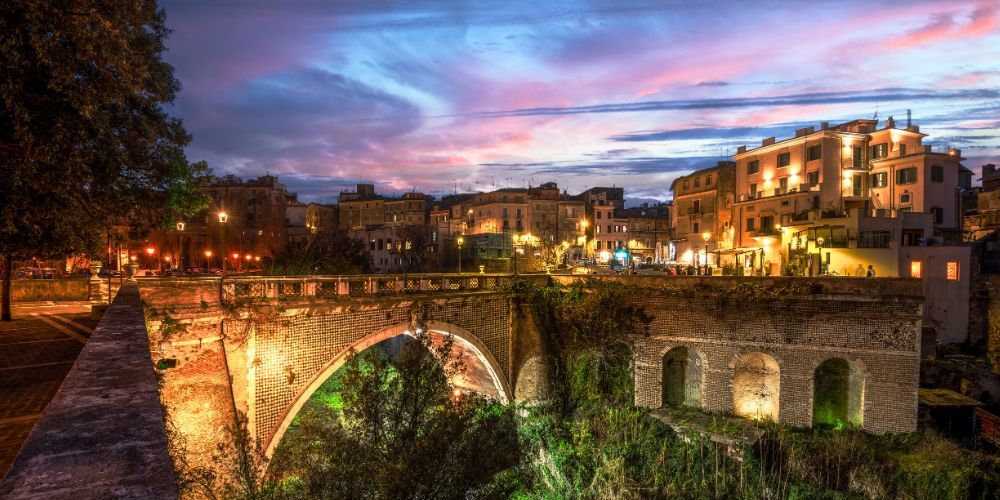
All roads lead to Rome, and definitely it couldn’t be otherwise also with regards to tourism. A city of priceless charm and historical and cultural value, worthy of a true Eternal City, which every day attracts millions of tourists from all over the world eager to experience first-hand the wonders held by the Capital.
But the stunning beauties of Rome are not limited to Rome itself, there is much more to discover in its surroundings. In fact, among the most beautiful gems of the Roman district there is Tivoli, less than an hour's journey from Urbe, a city of extraordinary beauty that boasts two wonderful Unesco World Heritage Sites - the extraordinary Villa Adriana and Villa d'Este, acknowledged as cultural heritage sites respectively in 1999 and 2001.
Villa Adriana was built at the behest of the Roman Emperor Hadrian in the 2nd century AD, and today it is a vast archaeological complex that reflects the grandeur and multiculturalism of the Roman Empire at the top of its hegemony. The villa extends on an immense surface of over 100 hectares, including numerous spaces such as temples, libraries, theaters, baths and gardens, all designed according to the refined tastes of the emperor and inspired by the places he had visited during his travels. Among the most iconic environments of the archaeological site there are the Pecìle Complex which recalls the atmosphere of the agorà of Athens, the Canopus which evokes the style and emotions of the area of the Egyptian Nile delta, and the so-called Maritime Theater, believed to be the residential structure of the emperor himself within the immense villa. Visiting Villa Adriana is a real journey through time, discovering one of the greatest examples of residential architecture of Roman age.
Villa d'Este, much more recent but no less fascinating, was built in the 16th century by order of Cardinal Ippolito II d'Este and today represents an extraordinary masterpiece of Renaissance architecture, art and elegance, famous above all for its magnificent Italian gardens, embellished with spectacular fountains and water games that enchant the eye. The numbers recorded by the entire project to build the villa are impressive: we are talking about over 3 hectares of gardens, 255 waterfalls, 100 pools and 50 fountains with hundreds of jets of water per minute, 20 terraces, 300 floodgates, 30,000 seasonal plants, 150 centuries-old trees, 15,000 perennial ornamental plants and trees and almost 1 hectare of avenues, paths and stairways. There is no doubt that Villa d’Este is a symbol of power and culture of Renaissance Rome, a landscape masterpiece combining architecture, sculpture, water and botanical arts in perfect balance and pure elegance.
Tivoli is home to many other attractions that are worth visiting to fully enjoy the exceptional beauty of this city. Among these we find the Cathedral of San Lorenzo, richly decorated inside with frescoes and paintings that recall the typical warm and vivid hues of the Baroque, the imposing Renaissance fortress of Rocca Pia that dominates the historic centre with its four cylindrical towers, and the remains of the ancient Sanctuary of Hercules Victor, evidence of the popular Latin cult of the hero Hercules in the ancient city of Tibur of notable historical and archaeological value.
9. Bobbio, a little irish glimpse along the banks of Trebbia

Have you ever heard of the masterpiece of the Irish monk? No, it is not a fantastic place in the magical land of shamrocks, but an extraordinary Italian village nestled on the banks of the Trebbia River not far from the western borders of Emilia-Romagna, a true geographical, historical and cultural crossroads in northern Italy. We’re talking about Bobbio.
The curious nickname by which it is known derives from its ancient origins. In fact, Bobbio became a point of reference on Italian maps in the distant year 614, with the arrival in this idyllic land between the northern Apennines and the Po Valley of the Irish monk Colombano - later become a saint - who founded an important monastery here. The Abbey of San Colombano is today one of the most beautiful and visited attractions in the historic centre of the village, which hosts the crypt where Colombano rests - who spent the rest of his life in Bobbio - and two museums, unique places that retrace in detail the life of the saint through many and rich historical finds that testify his work.
The Irish saint is also celebrated every year with the patron festival of San Colombano, precisely on November 23, a certainly suggestive occasion to experience this gem of the Middle Age while discovering also other places of tourist and cultural interest, such as the Cathedral of Santa Maria Assunta (or Cathedral of Bobbio) and the Malaspina-Dal Verme Castle.
Autumn is indeed the best season to visit Bobbio in peace and quiet, with the possibility of discovering the village in all its beauty. And when the sun shines on the Trebbia valley and on the peaks of the Apennines, it is a real pleasure to venture along the ancient medieval path to the Sanctuary of Monte Penice, a hiking and mountain bike trail that goes up from Bobbio to the highest and most renowned peak in the territory, where to admire an incredible and colorful foliage. In winter, instead, Bobbio is a particular and evocative destination to practice snow sports and go on adventurous hikes.
Speaking of beautiful postcard views and landscapes here in Bobbio, no less important is the iconic Ponte Gobbo, the suggestive bridge over Trebbia full of charm and mystery protagonist of numerous legends of local folklore, a mandatory stage to cross the river and access the historic centre.
8. Conversano, elegant town rich in history, arts and nature within Murge
The charm of castles, and of the large town squares developed around them, is one of the many characteristics that distinguish Italy as a prominent destination for its varied tourist offering. A country, ours, that boasts everywhere across the land many villages and towns, famous precisely for their castles, places that have now become iconic and that for centuries have represented important points of reference from north to south. And straight south, one of the most evocative and lively ones is Conversano, an elegant city of art within southern Murge, in the area of Bari.
The picturesque historic centre of Conversano is in fact dominated by the majestic Castle Acquaviva of Aragona, a large fortified residence with a renaissance and baroque style that has two imposing towers, one cylindrical and one polygonal that are impossible not to notice, as well as an internal courtyard and portico. The internal halls of the castle also house the Paolo Finoglio Art Gallery, an exhibition space of great artistic and historical interest where many works by the Neapolitan artist are kept, in particular his large canvases dedicated to Gerusalemme Liberata.
The Castle of Conversano is also the protagonist - and setting - of the event Novello Sotto il Castello, an important annual event that recalls the historic celebrations of the festival of San Martino in November, enhancing the grape harvest and the excellent local food and wine products. All of this, like any great celebration, accompanied by the engaging rhythm of electronic music.
Walking through the historic centre of Conversano you can also visit the Cathedral of Santa Maria Assunta, a beautiful romanesque church that houses a large and refined fresco of the Pisan school and a precious medieval wooden crucifix. Other attractions not to be missed include the Monastery of San Benedetto, home to the archaeological museum of ancient Norba, and the evocative Galleria Vì, an art gallery to be discovered right near the cathedral.
And to take advantage of the typically mild and sunny climate of Apulia, even in winter, we suggest to visit also the nature reserve of Lake Sassano to relax in a quiet environment immersed in nature, where you can go birdwatching and spot other particular animal species, especially small amphibians, reptiles and mammals.
7. Anacapri, evocative and unexpected winter destination to experience
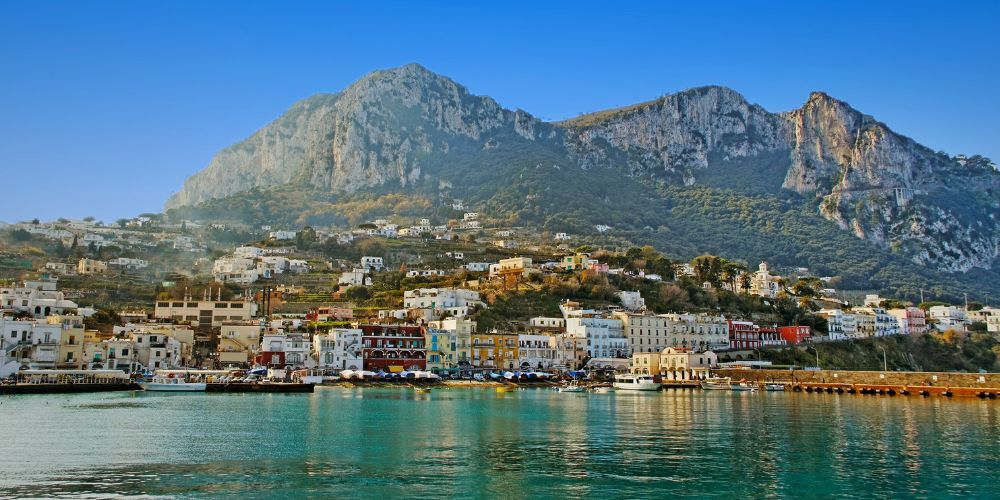
The Gulf of Naples, one of those poetic, evocative wonders that sometimes it’s sufficient thinking about them to bring to mind the scent and the flavor of summer, between days spent on the beach and spectacular boat trips discovering its picturesque islands. But what if all this could be experienced in winter too?
When the summertime ends, many might suspect that life in the splendid islands of the Gulf goes on stand-by, marking its own rhythms only relating to the closing and reopening of hotels and beach resorts. But this is absolutely not the case, because these places not only continue to exist, but rather become evocative and unexpected tourist destinations to be experienced even in autumn and winter.
The island of Capri, and in particular the town of Anacapri located in its highest part, shaking off the summer over tourism it rediscovers itself as a true gem of renewed beauty, ready to welcome and fascinate the most curious and adventurous travelers who want to have unique experiences in places (finally) free from the frenzy of masses of tourists invading the alleys of the village, the stunning panoramic terraces, the tourist port and the beaches of Marina Grande and Marina Piccola - but hey, on a beautiful sunny day it is possible to bathe or swim peacefully!
Thus, a new formula of tourism designed specifically for the winter, which doesn’t intend to imitate or even replicate summer out of season, but rather proudly promotes the landscape, historical, artistic and cultural side of the island, often forgotten. It can be the right occasion to stroll around the little squares and alleys enjoying every glimpse, to savor the classic Capri cuisine in the traditional restaurants, or to look out in complete tranquility from the Tragara Belvedere at the Gardens of Augustus (accessible for free in winter) and admire the wonderful landscapes.
And speaking of landscapes, the tranquility of Capri and Anacapri in winter months is ideal for experiencing an adventure to discover the peak of Monte Solaro, the highest on the island at almost 600 meters above sea level: after the summer, in fact, the Capri chairlift never goes on vacation, remaining active every day until early afternoon. For hiking enthusiasts, it absolutely shouldn’t be missed the Path of Bourbon Forts along the western coast of the island (in Anacapri).
Exploring the village of Anacapri, it is impossible not to visit Villa San Michele, a beautiful and fascinating house-museum (open all year round) full of many interesting finds - in particular the famous Egyptian sphinx looking out towards the horizon - with an exceptional panoramic view of the sea. The villa also hosts many events in Anacapri, such as Festival del Paesaggio (September/October), a cultural project that every year, developing ever new and exciting topics, promotes the art and works of national and international artists attracting many enthusiasts.
6. Orvieto, masterpiece of arts and architecture in the green heart of Italy

The green heart of Italy, Umbria, a region much loved by travelers from all over the world as an ideal destination for a holiday dedicated to slowness, exploration and a renewed sense of harmony with nature. A land of woods, mountains, rivers and lakes, but also of exceptional landscapes characterized by cities rich in artistic, architectural and cultural treasures.
Orvieto is the perfect example, a true masterpiece built on the top of a cliff in the suggestive and relaxing landscape of the Apennines, a place where the passage of history has left numerous testimonies that today can be discovered by visiting this wonderful city.
The most iconic attraction of Orvieto is the Cathedral of Santa Maria Assunta, one of the most beautiful and sumptuous Italian Gothic churches built between the Middle Age and the Renaissance, whose very high spires represent the most characteristic landscape element of the town. A place of pure art and beauty, which already brings together just in its facade the work of the most prestigious craftsmen of architecture, sculpture, painting and mosaic art of the time. A charm that even continues visiting the interior, finding yourself amazed and excited in the middle of the Chapel of San Brizio, a chamber richly decorated with the fresco cycle History of the Last Days or Judgment Day, considered a unique piece in the history of art for the originality of the theme and its representation.
Among so many places of religious worship to visit in Orvieto we also recommend the churches of Sant’Andrea, San Francesco and San Domenico, that are some of the oldest in the region. The city is also very rich in historic buildings, including Palazzo Soliano, Palazzo Papale, Palazzo del Popolo and Palazzo Faina, today mainly home to museums and institutions.
Orvieto also offers tourists many particularly suggestive and fascinating attractions, including the famous Well of St. Patrick, the Quarry’s Well, the underground city of the complex of the Caves of Hadrian and the Etruscan ruins of the Belvedere Temple.
5. Bard, a fairytale fortress village within Aosta’s Alps
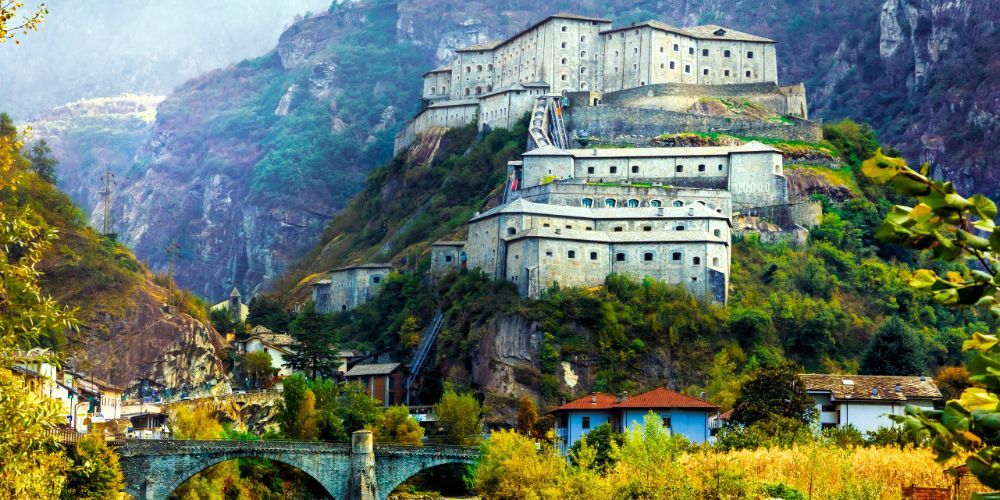
There are many fairytale places in Italy, so so many, each wonderful in its own way and all worthy of being discovered by travelers eager for beauty and emotions. One of these places is Bard, an enchanting fortress village that, just like a precious jewel in a crown, is perfectly set in the fairytale landscape of the Aosta’s Alps.
This small and charming mountain hamlet is dominated by Fort Bard, a majestic fortress that for centuries has been the solemn guardian of this stretch of land crossed by the Dora Bàltea river, the scene of battles and destruction, but also - and above all - of reconstruction, both material and cultural.
Today the fortress village of Bard is indeed an important artistic and cultural point of reference in the Aosta Valley, hosting within its mighty walls the museum complex known as the Museum of the Alps, full of halls and exhibitions to learn about the history of the castle and the village and discover the secrets of the most iconic mountains in Italy.
The village of Bard is also a particularly lively center all year round, home to many popular and characteristic events of the local tradition with great tourist appeal.
Among these, the most outstanding ones are Marché au Fort, the largest fair-market of Aosta Valley food and wine products held in October, and the Lumières de Noël au Fort de Bard between December and January, a stunning and sparkling Christmas light show to return to childhood and get excited on the occasion of the most magical holidays of the year.
4. Cariati, a seaside gem from Middle Age overlooking the Ionian Sea
The Ionian coast of Calabria, the coastline better known as Costa dei Saraceni capable of expressing the wildest and most authentic side of this splendid region, is the ideal destination for those who love the sea and intend to fully experience it all year round.
The most beautiful gem to discover and visit on the Ionian Sea is Cariati, a beautiful and picturesque seaside village that stands out for its dual nature of historic village and tourist and seaside location. Indeed, Cariati boasts a perfectly preserved medieval historic centre, located on the highest hill overlooking the entire modern city and the surrounding coastline, a true heap of history, art and tradition to feel excited and take a leap back in time.
Let yourself be carried away by the pleasure of discovery through the alleys of the historic centre, visiting beautiful places such as the Cathedral of San Michele Arcangelo, a neoclassical masterpiece with a wonderful dome covered in multicolored majolica, and many buildings of great historical and cultural value, in particular the seventeenth-century’s Palazzo del Seminario, visible just after the entrance of Porta Pia, on the main road that leads to the central Piazza Plebiscito.
Within the walls of Cariati, precisely in the chambers of the eighteenth-century’s Palazzo Chiriaci, another suggestive stop that absolutely cannot be missed is the Civic Museum of Sea, Agriculture and Migrations. It is a unique place, where to touch by hand the history and identity of this territory, deeply related to the sea as much as to the land, among memories and testimonies that speak of fields working, fishing and craftsmanship, key elements for all Mediterranean cultures.
The beauty of Cariati continues even outside the walls. Here, in fact, it is possible to find beautiful sandy beaches, interspersed along this coast also by rocky cliffs and fascinating inlets, as well as a romantic promenade along the seaside and a suggestive tourist port to enjoy a breathtaking sea view panorama, where the soft colors of the town’s landscape blend perfectly with the hues of the Ionian waters and the Calabrian hills.
3. Usini, the authenticity of Christmas within North Sardinia’s inland
Treating yourself to a trip to Sardinia in autumn or in winter is an experience of pure magic and intimacy, discovering a land that teems with culture, tradition and mysticism, that proudly boasts its own cultural identity, well beyond the material wealth and luxury of summer exclusive seaside resorts. And where can you find the essence of all this if not in the villages in the hinterland?
Among them is Usini, a small town in the province of Sassari that however has beauty and culture of immense value. Usini is in fact considered one of the authentic Christmas villages here in Sardinia, the most magical holiday of the year, celebrated joyfully in the prior weeks leading up to it with the popular food and wine event Ajò a Ippuntare, a real party that enlivens the entire town, visitors included, where the wonderful traditional clothes are shown off, the new wine is tasted and typical sweets and breads are prepared for the upcoming holidays.
The mild climate of Sardinia allows to visit Usini and many other villages in the surrounding area in complete comfort, enjoying perfect temperatures for being outdoors and strolling around picturesque alleys, pretty little churches (such as the Church of Santa Maria Bambina, in the picture), lively squares and rustic houses.
Usini is also a very rich destination from an archaeological point of view and hosts in its territory the sites of S'Elighe Entosu and S'Iscia 'e Sas Piras, both necropolises that include numerous domus de janas; also not to be missed, the sacred well S'Iscia 'e su Puttu and the tomb of giants Sas Iscias.
2. Arezzo, a triumph of history, arts and culture in Valdichiana
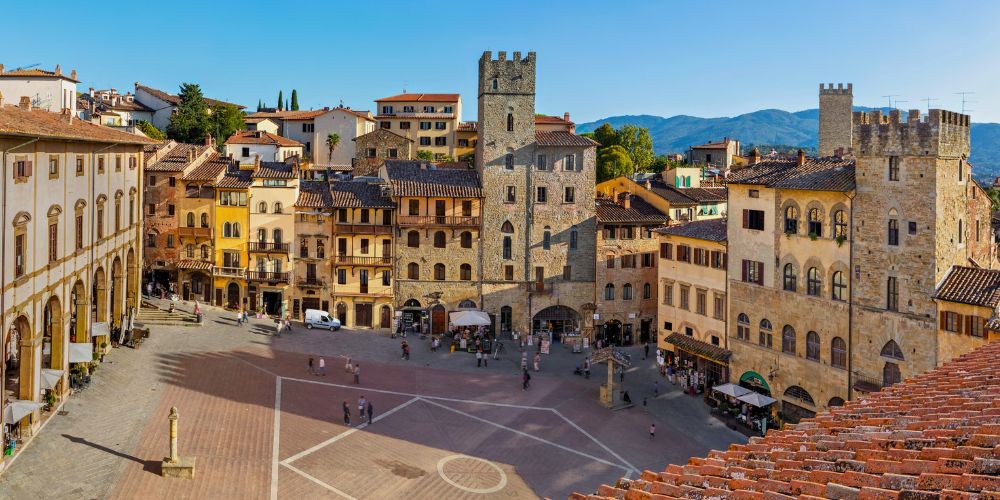
Tuscany is one of the most famous and appreciated Italian regions in the international cultural collective imagination, a deserved acknowledgment due to its so rich history made of great lordships, castles and noble villas, wonderful works of art of priceless value and stunning landscapes, alternating hills of vineyards and olive groves with city skylines characterized by the outlines of extremely famous buildings.
But if you think that Tuscany is only Florence and Pisa, you are wrong. If you want to avoid over tourism, but still want to enjoy a truly enriching travel experience that will make you dream even as soon as you get back home, let yourself be amazed by the beauty and charm of Arezzo, one of the most important centers in Valdichiana.
Visiting Arezzo feels like taking a journey back in time, slowly, to rediscover the myth of the chivalric Middle Age and the unique refinement of Renaissance art and architecture. The fundamental starting point for visiting the city is the beautiful Piazza Grande, one of the most evocative in Italy for its particular inclined trapezoidal shape dominated by the majestic Palazzo delle Logge, where to admire also Palazzo della Fraternita dei Laici with its astronomical clock and Pieve di Santa Maria Assunta.
Piazza Grande is also the stage for two important events that enliven the city, that are the jousting contest Giostra del Saracino - held twice a year, at the beginning and end of summer - and the very interesting Antiques Fair, a market-exhibition held every month on the first weekend.
On the highest hill in Arezzo stands the sumptuous Cathedral of Saints Peter and Donato, or simply Cathedral of Arezzo, a beautiful example of Gothic religious architecture rich in chapels, frescoes, ornaments and pieces of sacred art of enormous historical and cultural value, attributed in particular to Vasari, Della Robbia and Della Francesca, without forgetting the stained glass windows of de Marcillat. Among so many churches in Arezzo, we also recommend visiting the Church of San Domenico, which houses a wooden crucifix by Cimabue, and Basilica of San Francesco, where you can admire the cycle of frescoes about the History of the True Cross by Della Francesca.
Among many wonders to explore in Arezzo, and majestic historic buildings such as Palazzo Pretorio that today hosts the city’s library, we also suggest the mighty Medici’s Fortress and above all the Vasari House-Museum, an enchanting place where to admire valuable frescoed halls.
1. Treia, a true jewel to discover within Le Marche
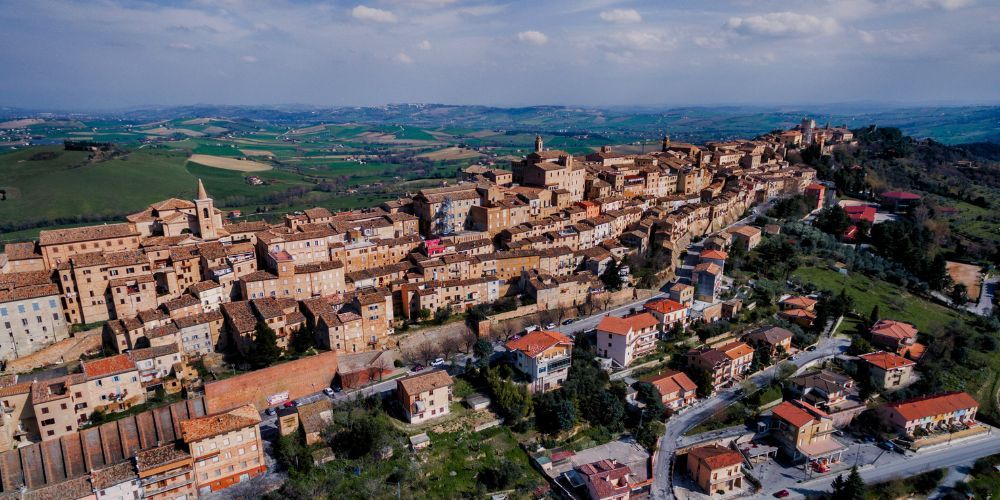
When it comes to hidden gems to discover and experience intensely with the emotion of traveling, Marche region is an unmissable destination in Italy. And among its most beautiful jewels Treia certainly stands out, an ancient village full of beauty in the province of Macerata less than an hour far from Recanati, birthplace of Giacomo Leopardi.
First a Roman colony, Treia nowadays is a charming village to explore slowly and with the desire to feel amazed, being fascinated by its walls and towers that stand out in this pretty hilly landscape, in particular the scenic Torre San Marco - what remains of the ancient Onglavina Castle.
A fundamental stop to absolutely visit in Treia is the iconic Piazza della Repubblica, the town lounge characterized by its peculiar aesthetic reminding of a horseshoe and a breathtaking viewpoint that offers an impressive panoramic view all the way to the sea. On the three sides of the square you can admire majestic 1700’s buildings, that are the Church of San Filippo Neri, the Town Hall and above all Accademia Georgica, a truly unique place that was a meeting point for scholars and intellectuals, today home to the municipal historical archive with a collection of about 14,000 ancient volumes.
Also not to be missed are Cathedral of SS. Annunziata, the Villas Valcerasa and Spada, the curious Museum of Pallone col Bracciale - a true place of worship dedicated to the most popular 1800’s Italian team sport - and the small, wonderful Teatro Condominiale in its neoclassical style.
About the author
Written on 24/09/2024


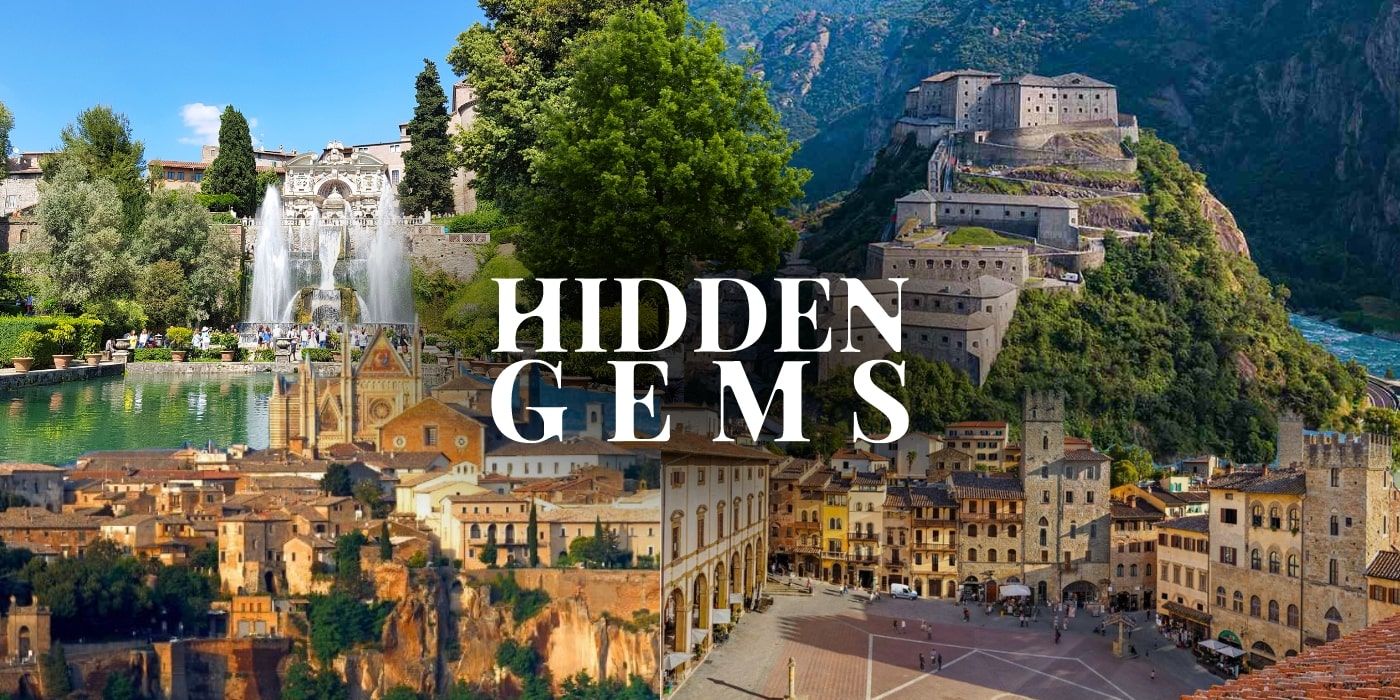
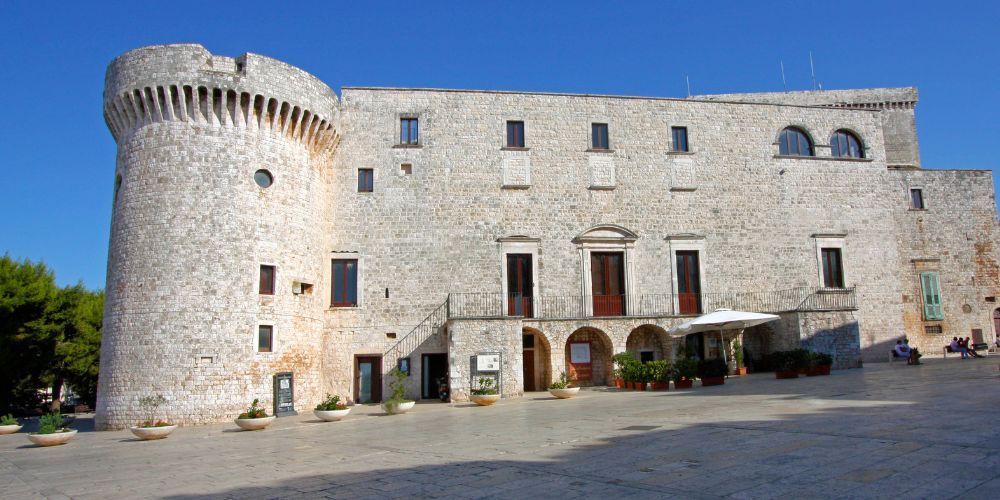
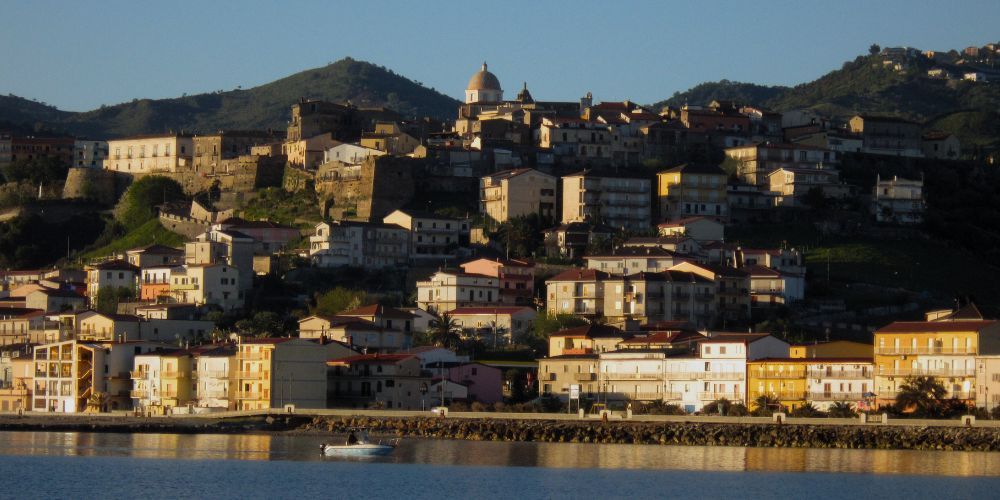
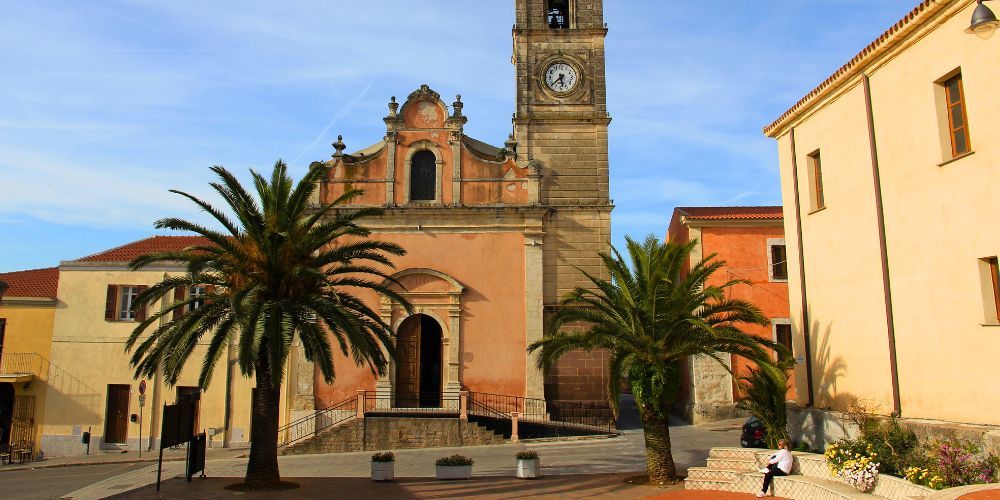
Massimiliano Antonio Primi
Are you looking for new destinations for your next trips away from mass over tourism? Let’s check out 10 Italian locations to visit this winter!